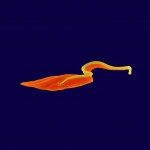Link to Pubmed [PMID] – 21501571
Biol Aujourdhui 2011;205(1):5-28
Cilia and flagella are ubiquitous organelles that protrude from the surfaces of many cells, and whose architecture is highly conserved from protists to humans. These complex organelles, composed of over 500 proteins, can be either immotile or motile. They are involved in a myriad of biological processes, including sensing (non-motile cilia) and/or cell motility or movement of extracellular fluids (motile cilia). The ever-expanding list of human diseases linked to defective cilia illustrates the functional importance of cilia and flagella. These ciliopathies are characterised by an impressive diversity of symptoms and an often complex genetic etiology. A precise knowledge of cilia and flagella biology is thus critical to better understand these pathologies. However, multi-ciliated cells are terminally differentiated and difficult to manipulate, and a primary cilium is assembled only when the cell exits from the cell cycle. In this context the use of model organisms, that relies on the high degree of structural but also of molecular conservation of these organelles across evolution, is instrumental to decipher the many facets of cilia and flagella biology. In this review, we highlight the specific strengths of the main model organisms to investigate the molecular composition, mode of assembly, sensing and motility mechanisms and functions of cilia and flagella. Pioneering studies carried out in the green alga Chlamydomonas established the link between cilia and several genetic diseases. Moreover, multicellular organisms such as mouse, zebrafish, Xenopus, C. elegans or Drosophila, and protists like Paramecium, Tetrahymena and Trypanosoma or Leishmania each bring specific advantages to the study of cilium biology. For example, the function of genes involved in primary ciliary dyskinesia (due to defects in ciliary motility) can be efficiently assessed in trypanosomes.
